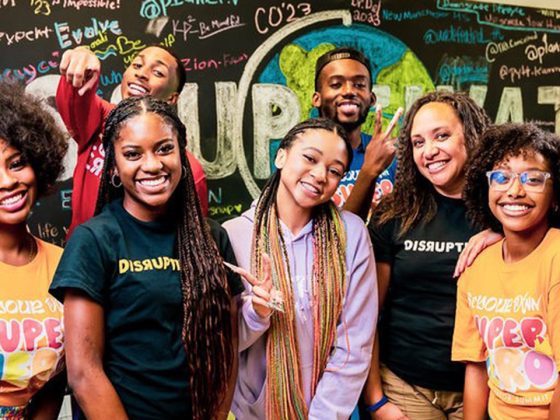This article is part 1 of a 3 part mini-series on digital wellbeing. The content has been authored and contributed to by the Google Digital Wellbeing Team (Kate Lockhart), the Google Material UXR (Michael Gillbert), and the Google P&E Developer Brand Marketing Team (Lily Sheringham). Keep a lookout for the further two articles in the series coming over the next few weeks!
Digital wellbeing is the state of satisfaction people feel when digital technology supports their intentions. This series of 3 articles explores how good UI design can foster digital wellbeing.
From our partners:
Maybe you’ve had this experience: you’re in bed at night and ready to go to sleep, but rather than putting your phone away and closing your eyes, you check your social media feeds one last time. You watch a few videos, refresh the news, and eventually find yourself on the twentieth page of messages.
The information overload from deferring sleep in favor of checking your social media feeds, the news, or just about any online content can lead to stress or anxiety, not to mention a lack of sleep. There’s a word for this activity: doomscrolling. Designing products that reduce doomscrolling anxiety is one example of how developers can support their users’ digital wellbeing.
Why support digital wellbeing?
Every interaction a user has with an app or device has consequences. The effect may be positive — your product could enable a child to keep in touch with parents more effectively or enable students to track their progress toward a deadline. But the effect may also be negative, encouraging the child to message friends late into the night or incentivizing the student to work 14-hour days to meet that same deadline. Which outcome do you want your app associated with? From an ethical and sustainable business perspective, it’s best to accentuate the positive and reduce the negative. To do that, it’s necessary to think through the consequences — whether intended or unintended — of your design.
Poor usability is a major source of unintended consequences and can have an impact on digital wellbeing. It may be a button that’s too small to easily select or a checkbox that can’t be checked. It might be text that’s unreadable against its background, or a form is unnecessarily complex. Poor usability could require people to search separately to determine a product’s availability in different locations, rather than listing the locations where the product is available. The result of many of these issues is the same: user frustration. Such feelings of annoyance or frustration impact overall wellbeing.
In other cases, products are designed to impact your behavior more intentionally. Consider, for example, gamification. A typical strategy for a gamified experience might be to award points or other rewards for product interactions, with the intention of increasing the quantity or quality of your interactions with the product. Research in persuasive technology — such as that highlighted in Persuasive technology: using computers to change what we think and do — has shown that this type of approach can be very effective.
But how do such intended interactions with digital technology impact a person’s mood, mind, and wellbeing? The effect may or may not be intentional: gamification may successfully increase engagement but leave people feeling frustrated as a result.
Focusing on UX principles
Any interaction with technology can impact an individual’s wellbeing, either positively or negatively. So, what strategies can you, as a developer, use to build for digital wellbeing?
Google has developed UX principles for digital wellbeing, with the goal of supporting people’s intentions and, consequently, their wellbeing.
These principles are built around the 7 dimensions of wellbeing. When supported, each area evokes positive feelings for the user. The 7 dimensions are shown in the chart below.
As developers, we can support people’s intentions in all of these dimensions of wellbeing by applying 4 design principles:
- Empowerment
- Awareness
- Control
- Adaptability
Empowerment — Start with supportive defaults
It can be difficult to change behavior — decades of behavioral economics research show the power of defaults over information alone for changing behavior. Defaults have effectively influenced choices in domains such as finance (401Ks) and health (organ donations). This finding suggests that defaults are a great opportunity to make an impact within products.
Awareness — Illuminate behaviors and goals
Reflection helps people become more aware and intentional of how they’re spending their time. Also called knowledge of results or self-awareness, reflection plays a significant role in behavior change because it helps people self-regulate as they strive to reach their goals. This concept is demonstrated to be valuable in multiple studies that focus on sleep, exercise, and nutrition.
Control — Provide transparent settings
According to a 2019 study sponsored by Google and conducted by dScout, 1 in 3 people made or attempted to make changes to their tech use to address the undesired effects they had experienced. Over 80% of those who acted found it to be helpful.
Adaptability — Build context-aware experiences
When people’s goals were hindered by tech, they felt annoyed, tired, and even ashamed. On the other hand, when people’s goals were supported by tech, they felt happy, proud, calm, and excited.
For UX design, applying these principles means you don’t need to reinvent the wheel. So, instead of focusing on the ambiguous goal of improving digital wellbeing in an app, you can focus on a more tractable goal: ensuring that people can do the thing they want to do, according to their needs.
These design principles already underpin initiatives to foster consumers’ digital wellbeing in Google products and Android. To learn more, checkout wellbeing.google, where you can find the Digital Wellbeing product experience toolkit, and the digital wellbeing section on android.com.
What next?
This post has introduced principles you should apply to UX design to enhance people’s digital wellbeing. The next post will provide more concrete guidance on applying the UX design principles when designing and building for digital wellbeing.
What do you think?
Do you have thoughts on digital wellbeing and how to help encourage it? Let us know in the comments below or tweet using #AskPlayDev and we’ll reply from @GooglePlayDev, where we regularly share news and tips on how to be successful on Google Play.
By Kate Lockhart | Michael Gillbert | Lily Sheringham
Source Medium
For enquiries, product placements, sponsorships, and collaborations, connect with us at [email protected]. We'd love to hear from you!
Our humans need coffee too! Your support is highly appreciated, thank you!








